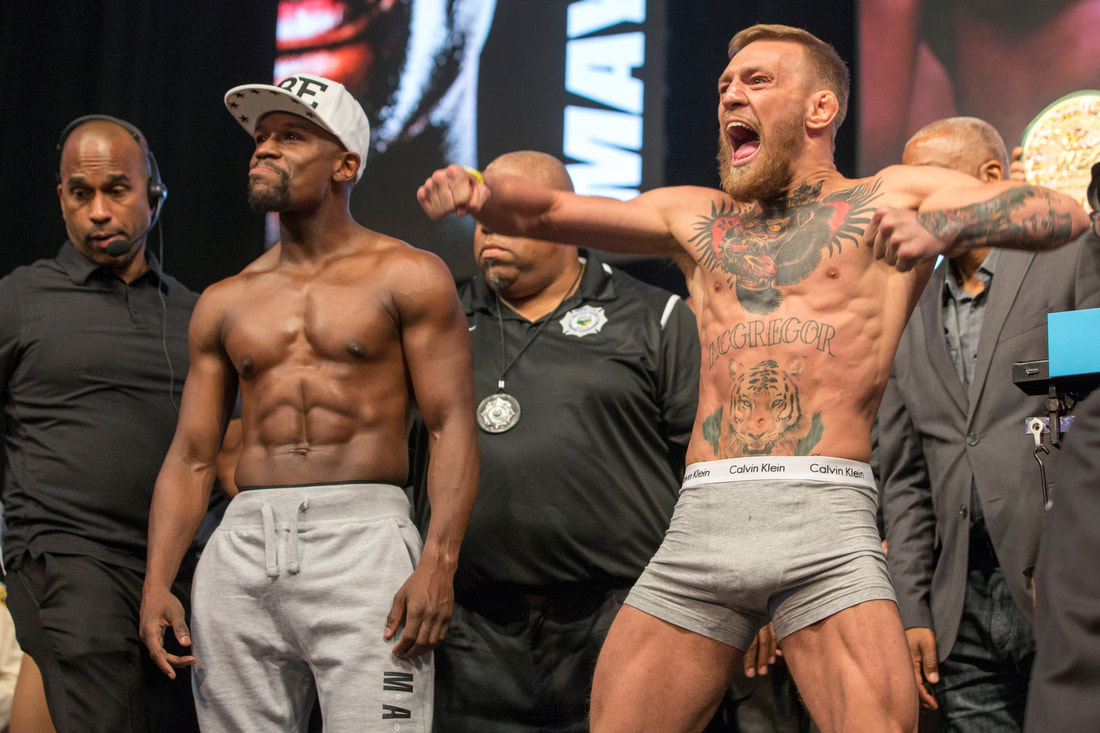|
Given the recent Mayweather/McGregor fight, a fight with a clear size difference between fighters, I thought I’d explain the art and science of weight-cutting, and how this phenomenon relates to nutrition, health, and performance.
If you didn’t see the fight or weigh-in, a few key facts include:
The fact that McGregor was TKO’d in the 10th round is actually of remarkably little importance here. I’m not usually one to say that winning and losing is not important; it is clearly a performance indicator. But in this case, I really don’t think you can measure his performance on a binary scale given all the other variables (i.e. their existing skill sets and experience in boxing). What I would like to focus on more is that McGregor had what appeared to be a slight size advantage at weigh-ins, become quite a large size advantage on the night of the fight. So how did McGregor put on what looked like 10-20 lbs. of lean mass in 24 hours? Now, I’m speculating here that McGregor followed this standard weight-cutting process I’m about to describe. He was the larger athlete and had a what looked like a drastic increase in size from Weigh-Ins to Fight, but keep in mind that I don’t actually work with him, and don’t actually know what he weighed leading into weigh-ins or on the night of the fight. However, I know this process intimately. I’ve work with athletes on weight management, but more importantly I have personally cut-weight more times than I can count. Near the end of my wrestling career, my weight would bounce from 65kg (143lbs) at weigh-ins, to about 73kg (161lbs) in competition the next morning. Weight-Cutting 101:
It is important to remember that I am not condoning “cutting-weight”, but merely explaining the phenomenon in hopes that a more knowledgeable athlete can make smarter choices. “Cutting-weight” can be very dangerous, and should be done so in a supervised manor, if done at all. Involve coaches in the decision, and speak with a dietitian about it. Think about the potential advantages, and how they weigh against the possible disadvantages and safety concerns of this practice before making any decisions. Writer: Kevin Iwasa-Madge, Sports Dietitian, CSCS
3 Comments
20/8/2022 10:15:50 am
One of the reasons why Conor McGregor looks so much heavier than Floyd Mayweather Jr. is because of his unique diet which includes high amounts of protein shakes and supplements to help him recover from all those hard workouts that he does all year long!
Reply
1/2/2024 05:33:25 am
Spike is a baby dragon in the animated television series "My Little Pony: Friendship Is Magic."
Reply
Leave a Reply. |
Categories
All
Archives
November 2021
|
- Home/ News
- About
- Services/ Store
- Media
-
Learning Center
- ESN Athletic and Healthy Lifestyle Learning Center >
-
Professional Learning Center
>
-
The ESN Sports Nutrition Certificate
>
- ESN Learning Center - Sports Nutrition Certificate Level 1 >
- ESN Learning Center Sports Nutrition Certificate Level 2 >
-
ESN Learning Center - Sports Nutrition Certificate Level 3
>
- Module 1 - Periodization for the Athlete
- Module 2 - Nutrition Strategies to Optimize Recovery
- Module 3 - Sports Nutrition for Children and Young Athletes
- Module 4 - Sports Nutrition for the Aging Athlete
- Module 5 - Nutritional Strategies for Injury Prevention and Concussions
- Module 6 - Nutritional Strategies for the Travelling Athlete
- Module 7 - Tournament Nutrition Strategies
-
The ESN Sports Nutrition Certificate
>
- Contact
Proudly powered by Weebly


 RSS Feed
RSS Feed